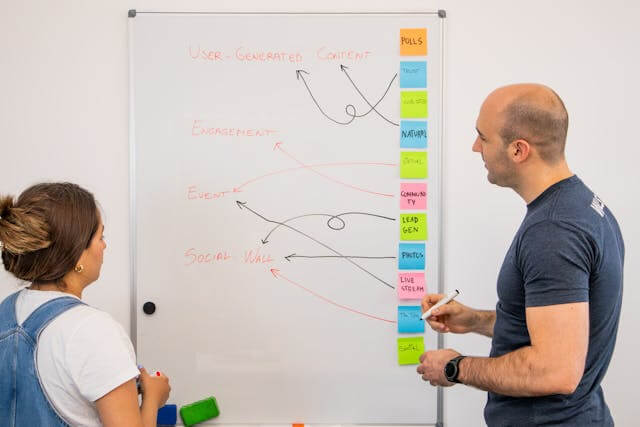A long sales cycle is the single biggest drag on revenue for companies that sell complex enterprise solutions. They increase customer acquisition cost, consume scarce sales resources, and hide market signals. Yet with the right playbook, you can shave months off deal timelines without shortcutting diligence.
This article shows how to shorten the sales cycle for enterprise solutions in a practical, repeatable way. Read it like a blueprint: apply one section at a time, measure results, then scale what works.
Why shortening the enterprise sales cycle works
Long cycles hurt growth and predictability. More time in the pipeline means more opportunities for a prospect to change priorities, switch vendors, or pause budgets. Therefore, shortening the sales cycle improves cash flow and reduces churn risk.
In addition, shorter cycles allow sales teams to handle more opportunities and to iterate on messaging faster. Research suggests that organized sales teams that focus on process and qualification close deals faster and more consistently.
Moreover, buyers now expect faster responses and clearer outcomes from vendors. If you move with speed and clarity, you win credibility and momentum.
Also Read: Selling to the C-Suite: How to Position Enterprise Solutions That Win Big Contracts
The anatomy of a long enterprise sales cycle
Complex deals slow down for specific, repeatable reasons:
- Unclear decision-making units and hidden stakeholders.
- Poor qualification that creates false starts.
- Long technical validation and compliance reviews.
- Slow procurement and legal negotiations.
- Lack of measurable business outcomes and pilot ambiguity.
If you want to shorten the sales cycle for enterprise solutions, address each bottleneck directly. You must do this without rushing buyers or cutting necessary checks.
Step-by-step guide on how to shorten the sales cycle for complex enterprise solutions
1. Start with ruthless qualification
Too many demos are scheduled with unqualified contacts. As a result, reps waste time and prospects get frustrated. Instead, adopt a short pre-demo qualification ritual. A seven-minute discovery call is often enough to confirm budget timing, the primary business problem, and the decision-makers involved.
Use a checklist with three non-negotiables: timeline, authority, and impact. If a lead cannot meet those criteria, classify them as nurture, not immediate pursuit.
This small change alone can increase your active pipeline quality and remove deals that would otherwise stall.
2. Map the buying committee early and often
Enterprise buying groups expand and contract. Consequently, surprises about additional stakeholders are common. To avoid this, ask these questions in discovery:
- Who approves the budget?
- Who evaluates technical fit?
- Who signs the contracts?
- And who influences the decision informally?
When you get the details, build a stakeholder map and update it after each interaction.
Map each stakeholder’s top five concerns and prepare one tailored message per stakeholder. When you address concerns preemptively, internal alignment happens faster and fewer meetings are required.
Also Read: From Demo to Deal: How to Improve Tech Sales Conversion Rates by 40%
3. Sell outcomes, not features
Executives and procurement care about measurable outcomes. They do not buy based on features. So, translate your product capabilities into business outcomes.
For example, replace “our platform supports X integrations” with “this integration reduces reconciliation time by 70% and cuts headcount requirements by 1.5 FTEs.” Numbers change the tenor of conversations. They also give procurement the data they need to endorse purchases.
Consequently, an outcome-first demo accelerates internal approvals and shortens negotiation windows.
4. Use time-boxed pilots with clear success metrics
Pilots become the fastest route to certainty when designed properly. However, many pilots are open-ended and never complete. Fix this by time-boxing pilots and defining three success metrics and decision gates upfront. Decide who will run the pilot on the customer side and who from your team will provide support.
Finally, include a conversion path and optional contract term in the pilot agreement to make it simple to convert if the outcomes are met.
Pilots done right remove ambiguity and turn hypothetical value into measurable proof.
5. Remove procurement friction with pre-approved terms
Procurement and legal reviews create the longest tail in many deals. Therefore, prepare by offering pre-approved contract templates and standardized SLAs.
In addition, include optional commercial frameworks such as phased rollouts, milestone-based payments, or outcome-based pricing. These options reduce negotiation cycles because they give procurement safe, tested choices rather than forcing bespoke language on every deal.
Moreover, share red lines early and offer a legal “FAQ” that explains common clauses and why they exist. Transparency reduces back-and-forth.
6. Enable sales with battle-tested playbooks and battle cards
Salespeople need quick reference guides. Create one-page battle cards for the top 3–5 competitors and for the main procurement objections. Include short rebuttals, demo scripts, and deployment timelines.
Also, provide a half-page ROI model template that reps can populate during or immediately after a demo.
When reps can answer buyer questions quickly and consistently, momentum is preserved and stalls decrease.
7. Automate intelligent, behavior-driven follow-up
Speed matters. Leads lose interest quickly if no one follows up. Automation is not a replacement for human outreach, but it is a force multiplier. Set up behavior-driven sequences: if a prospect watches a security demo clip twice, trigger a technical FAQ and an invitation to a short follow-up call.
If they view pricing, trigger a short ROI model and procurement checklist. These nudges keep conversations moving while preserving personalization.
Remember: timely relevance beats generic persistence.
8. Shorten internal SLAs and handoffs
Long internal handoffs kill momentum. Therefore, set internal Service Level Agreements (SLAs) for responses to pricing, legal red-lines, and technical questions. A good rule is 24–48 hours for pricing and 72 hours for detailed legal queries.
Track SLA adherence and make it a performance metric. In addition, create a single point of contact for each deal—someone responsible for keeping the clock moving internally.
Faster internal responses preserve buying intent and avoid the “vendor disappeared” trap.
9. Teach buyers to buy
Many enterprise buyers have not purchased your category recently. As a result, they hesitate. You can accelerate decisions by teaching them how to buy. Provide a simple decision pack: an executive summary, an ROI model, a suggested evaluation timetable, and a procurement checklist. In addition, offer a facilitated executive briefing where you walk the buying committee through the pack and answer questions in real time.
When you help buyers navigate their process, deals close faster because approval friction falls.
10. Use intent and competitive intelligence to prioritize motion
Intent data and competitive signals tell you when a buyer is active and where opportunities exist. Prioritize accounts that show high intent signals and use CI to tailor outreach. If a prospect is researching competitors or regulatory topics tied to your offering, move quickly and present tailored evidence.
Because intent signals indicate readiness, acting on them shortens the path from first contact to commitment.
Metrics that prove progress
To ensure your changes shorten sales cycles, track these metrics weekly:
- Median days from qualified lead to demo.
- Median demo-to-pilot time.
- Pilot-to-deal conversion rate.
- Average days in contracting.
- Win rate for deals that used outcome-first demos.
Segment these by persona, industry, and geography. For instance, deals in regulated industries may need extra legal cycles. By isolating the longest stages, you can target the right fixes.
Also Read: Top 10 B2B Lead Generation Mistakes That Tech Firms Make And How to Avoid Them
Shortening the enterprise sales cycle in Nigeria
If you sell in Nigeria or similar markets, adapt these principles to local realities. Decision timelines can be influenced by public sector budget windows, FX considerations, and relationship networks.
Therefore, demonstrate local delivery capability with regional references. Also, be proactive about payment terms and currency risk.
Finally, use in-country partners to accelerate procurement and implementation approvals. These local signals reduce perceived risk and accelerate decision-making.
Things you must not do to shorten sales cycle
Avoid these mistakes when shortening the sales cycle:
- Rushing buyers without evidence: speed should not replace proof.
- Skipping compliance checks: this creates long tails later.
- Overcomplicating pilots: too broad pilots never finish.
- Ignoring internal process fixes: tools alone won’t fix broken handoffs.
Be pragmatic. Speed is a discipline not a shortcut.
Shortening the sales cycle is ongoing work. Implement a monthly review that includes sales, product, legal, and customer success. Review the pipeline for stalled deals and identify root causes. Then run 2-week experiments against the biggest bottlenecks and measure change. Small, repeated wins compound into significant cycle compression over time.
Final thoughts
If you want to shorten the sales cycle for enterprise solutions, focus on qualification, stakeholder mapping, outcome selling, time-boxed pilots, procurement readiness, and fast internal SLAs. Use data to prioritize action, and teach buyers how to buy. When you remove friction at every stage, you accelerate deals without sacrificing rigor.
Start with one change this week. Then add another. Over time, you’ll see fewer stalled deals, better predictability, and faster revenue growth. If you’d like, I can help you build a one-page qualification checklist and a pilot template customized for your product and market.








